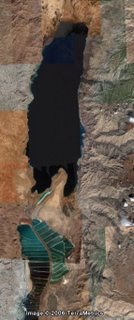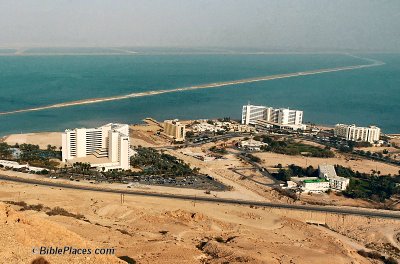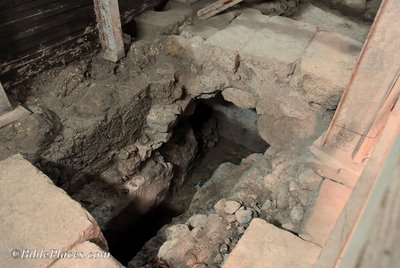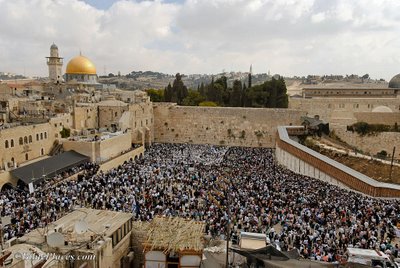A record number of Jews streamed to the Western Wall this morning for the traditional blessing of the priests during the festival of Sukkot. Police had to close the entrances into the prayer plaza because of the crowds.
The ceremony has become a tradition ever since the liberation of the Temple Mount during the Six-Day War in 1967 and is seen as an observance of the Jewish obligation to make a pilgrimage to Jerusalem and the Holy Temple three times a year, on Pesach (Passover), Shavuot (Pentecost) and Sukkot (Tabernacles). During the weeklong Pesach and Sukkot holidays, the ceremony is held on the second of the Hol haMoed (intermediate) days.
Hundreds of kohanim, Jews who trace their lineage to Aaron, the first High Priest, stood closest to the Western Wall to take part in the special blessings. Attending the Western Wall prayers Monday were Chief Rabbis Shlomo Amar and Yonah Metzger, as well as Western Wall Rabbi Shmuel Rabinovitch. Rabbi Rabinovitch told Arutz-7 that Monday’s priestly blessing marked the largest such gathering for prayers at the site since the first Sukkot after the Six Day War.
Police were forced to close the gates leading to the Western Wall Plaza due to its being filled to capacity by worshippers. “The blessing, however, reaches those stuck outside the plaza as well, obviously,” Rabbi Rabinovitch said. He added that many of those packing the plaza were not outwardly observant. “Many secular Jews have adopted the custom of making a pilgrimage to the Western Wall on the holiday,” he said.
The Birkat Kohanim is a part of daily prayers in Israel, but is only recited on holidays in most communities outside Israel. The blessing given appears in Numbers 6:23-27:
And G-d spoke to Moses saying: Speak unto Aaron and his sons, saying, in this manner shall you bless the children of Israel. Say to them:
May the Lord bless you and keep you.
May the Lord shine His face upon you.
May the Lord lift His countenance upon you, and grant you peace.





